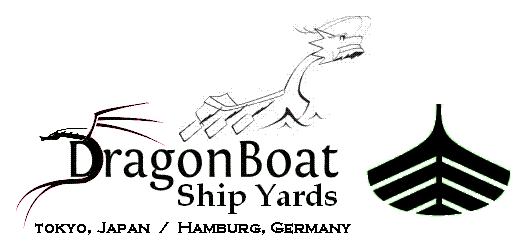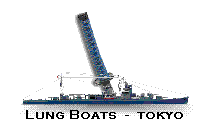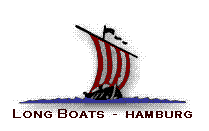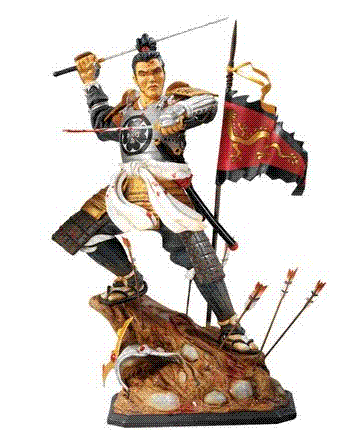
undefined
undefined
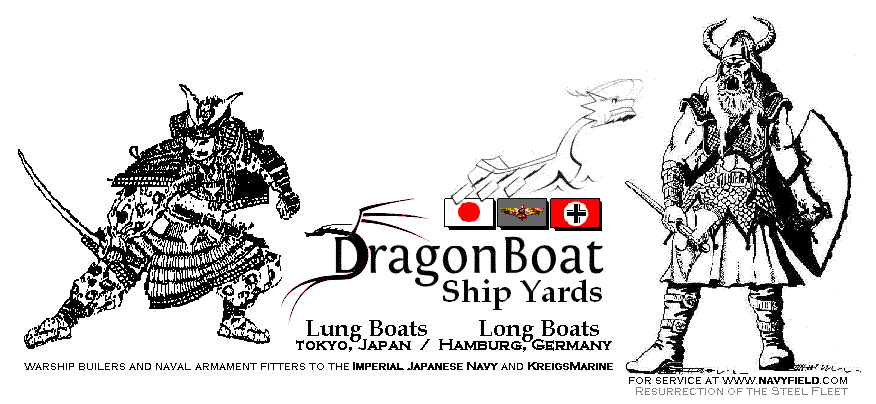

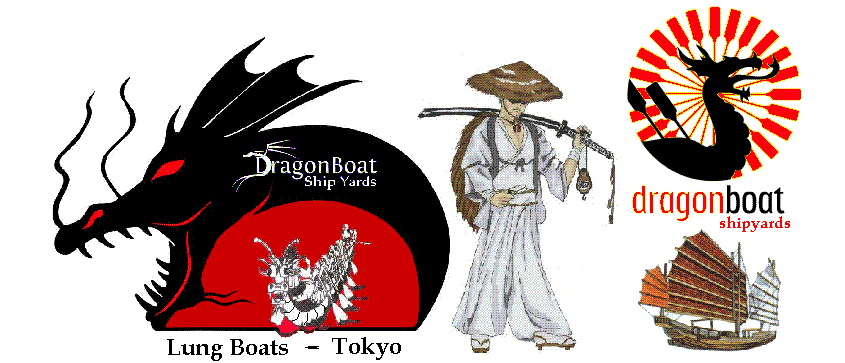

Imperial Japanese Navy - KAGA Aircraft Carrier
==========================================================================
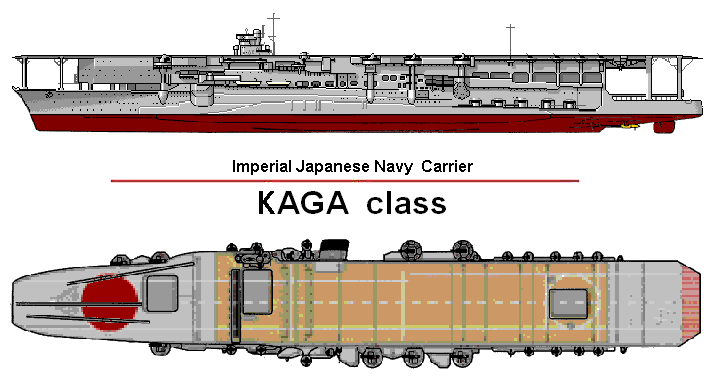
Kaga was an aircraft carrier, converted from a battleship hull due to be scrapped under the terms of the 1922 Washington Naval Treaty. She was built at Kobe and Yokosuka in Japan, launched in 1926, and reconstructed (extended the flight deck) in 1934-1935. While her speed was not top-notch, her tall flight deck provided a large and dry platform for takeoffs and landings, making it a welcoming home for her aircrafts. She was active off China during the Sino-Japanese War, and was one of the main carriers that launched the planes that attacked Pearl Harbor.
The Kaga was originally laid down as a class of battleships which were designed by Hiraga Yuzuru of the Imperial Navy and were to be a larger modified form of the Nagato. Two ships were laid down for the class known as Design A-127, named the Kaga and the Tosa, and were identifiable from the Nagato class by their flush deck. The Kaga were equipped with 24 inch torpedo tubes, which with a break from past design, were placed above the water line.
The ships were outfitted with downward sloping belt armor configured to handle 16 inch shells and their lower armor deck was almost completely removed in favor of a heavier flat deck over the belt. Ultimately, completion of the two Kaga class battleships was forbidden under the jurisdiction of the Washington Naval Treaty with the result that that both were canceled. The Tosa was used for target practice and armor experimentation, while the Kaga was converted into an aircraft carrier.
Kaga (formerly Kaga Province, in present-day Ishikawa Prefecture) was Japan's first heavy aircraft carrier, originally laid down as a Tosa-class battleship, which was launched on 17 November 1921 at the Kawasaki Heavy Industries shipyard in Kobe. On 5 February 1922 both Tosa class ships were canceled and designated for scrapping under the terms of the Washington Naval Treaty.
The Treaty authorized conversion of two battleship or battlecruiser hulls into aircraft carriers of up to 33,000 tons standard displacement. The incomplete battlecruisers Amagi and Akagi were initially selected, but the Great Kanto Earthquake of 1923 damaged Amagi's hull beyond economic repair. Kaga was therefore selected as her replacement. Kaga's conversion to an aircraft carrier was ordered on 13 December 1923, but nothing was done until 1925 as new plans had to be drafted and the Yokosuka Naval Arsenal's damage from the earthquake had to be repaired. She was officially commissioned on 31 March 1928, but this really only signified the beginning of sea trials. She joined the Combined Fleet (Rengo kantai) on 30 November 1929.
Kaga (named for an old Japanese province) was originally laid down and launched as a 39,900 ton battleship as part of the 8-8 Fleet plan of the Japanese Navy. However, final construction of the Kaga was halted after Japan signed the Washington Naval Treaty. It was then decided to convert her into an aircraft carrier after the hull of the planned carrier conversion of the battlecruiser Amagi was seriously damaged in the great 1923 earthquake. Kaga's conversion began in the latter part of 1923.
The Kaga was laid down along a similar design as her sister ship the Akagi. One difference was her shorter flight deck, approximately 58 feet shorter than that of the Akagi. Another difference involved the Kaga's funnel system, which deviated from the original large and small system of the Akagi. Instead, Kaga had boiler uptakes which bypassed the hangar deck and vented over the aft quarter deck.
Kaga was completed at a length of 238.5 m (782 ft) overall. She had a beam of 31.67 m (103.9 ft) and at full load a draft of 7.92 m (26.0 ft). She displaced 26,900 long tons (27,300 t) at a standard load, and 33,693 long tons (34,230 t) at full load, nearly 6,000 long tons (6,100 t) less than her designed displacement as a battleship.
Kaga, like Akagi, was completed with three superimposed flight decks, the only carriers ever to be designed so. The British carriers converted from "large light cruisers", HMS Glorious, HMS Courageous, and HMS Furious each had two flight decks, but there is no evidence that the Japanese copied the British model. It is more likely that it was a case of convergent evolution as a means to launch as many aircraft as quickly as possible. Kaga's main flight deck was 171.2 metres (562 ft) long, her middle flight deck began right in front of the bridge and was only about 15 metres (49 ft) long and her lower flight deck was approximately 55 metres (180 ft) long. The utility of her middle flight deck had to be questionable as it was so short that only lightly loaded aircraft had any chance of using it at all, even in an era where the aircraft were much lighter and smaller than they were during the Second World War. At any rate the ever-increasing growth in aircraft performance, size and weight meant that even the bottom flight deck was no longer able to accommodate the take-off roll required for the new generations of aircraft being fielded and it was plated over when the ship was modernized in the mid-1930s.
As completed, the ship had two main hangar decks and a third auxiliary hangar with a total capacity of 60 aircraft. The hangars opened onto the middle and lower flight decks to allow aircraft to take off directly from the hangars, while landing operations were in progress on the main flight deck above. No catapults were fitted. Her forward aircraft lift was offset to starboard and 10.67 by 15.85 metres (35.0 ft × 52.0 ft) in size. Her aft lift was on the centerline and 12.8 by 9.15 metres (42 ft × 30 ft). Her arresting gear was a French transverse system used on their aircraft carrier Béarn known as the Model Fju (Fju shiki) in Japanese service.
Kaga was armed with ten 20 cm (7.9 in)/50 3rd Year Type guns; one twin Model B turret on each side of the middle flight deck and six in Model A1casemates aft. They fired 110-kilogram (240 lb) projectiles at a rate of 3–6 rounds per minute with a muzzle velocity of 870 m/s (2,900 ft/s); at 25°, this provided a maximum range between 22,600–24,000 m (24,700–26,200 yd). The Model B turrets were nominally capable of 70° elevation to provide additional anti-aircraft fire, but in practice the maximum elevation was only 55°. The slow rate of fire and the fixed 5° loading angle minimized any real anti-aircraft capability. This heavy gun armament was provided in case she was surprised by enemy cruisers and forced to give battle. While superficially logical this ignored her large and vulnerable flight deck, hangars, etc., that made her more of a target in any surface action than a fighting warship. The Americans did much the same with the provision of four twin 8-inch (203 mm) gun turrets on their Lexington-class carriers. She was given an anti-aircraft armament of six twin 12 cm (4.7 in) 45-caliber 10th Year Type Model A2 gun mounts fitted on sponsons below the level of the funnels, where they could not fire across the flight deck, three mounts per side. These guns fired 20.3-kilogram (45 lb) projectiles at a muzzle velocity of 825–830 m/s (2,710–2,720 ft/s); at 45° this provided a maximum range of 16,000 m (17,000 yd), and they had a maximum ceiling of 10,000 m (11,000 yd) at 75° elevation. Their effective rate of fire was 6–8 rounds per minute. She had two Type 89 directors to control her 20 cm guns and two Type 91 manually-powered anti-aircraft directors (Koshaki) to control her 12 cm guns.
Kaga's waterline armored belt was reduced from 280 to 152 mm (11 to 6.0 in) and the upper part of her torpedo bulge was given 127 mm (5.0 in) of armor. Her deck armor was also reduced from 102 to 38 mm (4.0 to 1.5 in).
When Kaga was being designed the problem of how to deal with exhaust gases in carrier operations had not been resolved. The swivelling funnels of the Hosho had not proved successful and wind-tunnel testing had not provided an answer either. So Akagi and Kaga were each given different solutions to evaluate in real-world conditions. Kaga's funnel gases were collected in a pair of long horizontal ducts which discharged at the rear of each side of the flight deck although a number of prominent naval architects predicted they would not keep the hot gases away from the flight deck. They proved to be correct, not least because Kaga was slower than the Akagi which allowed the gases to rise and interfere with landing operations. Another drawback was that the heat of the gases made the crew's quarters located on the side of the ship by the funnels almost uninhabitable.
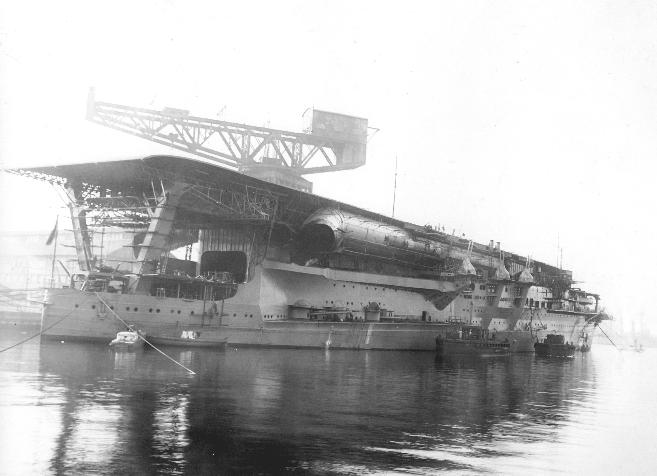
Kaga was completed with four Kawasaki Brown-Curtis geared turbines with a total of 91,000 shp (68,000 kW) on four shafts. As a battleship her expected speed was 26.5 knots (30.5 mph; 49.1 km/h), but her reduction in weight from 39,900 to 33,693 long tons (40,500 to 34,200 t) allowed to her speed to increase to 27.5 knots (31.6 mph; 50.9 km/h) on trials on 15 September 1928. She had twelve Type B (Ro) Kampon boilers with a working pressure of 20 kg/cm2, although only eight were oil-fired. The other four used a mix of oil and coal. She carried 8,000 long tons (8,100 t) of fuel oil and 1,700 long tons (1,700 t) of coal to give her a range of 8,000 nmi (14,820 km) at 14 knots (26 km/h).
She supported Imperial Japanese Army troops during the Shanghai Incident of 1932 and participated in the Second Sino-Japanese War in the late 1930s. She took part in the Pearl Harbor raid, several battles in the Southwest Pacific in January and February 1942, and was sunk at the Battle of Midway on 4 June 1942.
In service, she was judged inferior to Akagi because of her slower speed, smaller flight deck and problematic funnel arrangement. In 1934, Kaga therefore commenced a second major reconstruction. The flight deck and hangars were extended to the bow, increasing the flight deck length to 248.55 metres (815.5 ft) and raising aircraft capacity to 90 (72 operational and 18 in storage). A third elevator forward, 11.5 by 12 metres (38 ft × 39 ft) in size, serviced the extended hangars. Bomb and torpedo elevators were modified to deliver their munitions directly to the flight deck. Her arrester gear was replaced by a Japanese-designed Type 1 system. A small starboard island superstructure was also installed.
Her power plant was completely replaced as were her propellers. New Kampon multi-stage geared turbines were fitted that increased power from 91,000 to 127,400 shp (68,000 to 95,000 kW) during trials. Each had a high-pressure, a low-pressure, and a cruising turbine coupled to a single shaft. Her boilers were replaced by eight oil-burning, improved models of the Kampon Type B (Ro) with a working pressure of 22 kg/cm2 (2,157 kPa; 313 psi) at a temperature of 300 °C (572 °F). The hull was lengthened by 10.3 metres (34 ft) at the stern to reduce drag and she was given another torpedo bulge above the side armor abreast the upper part of the existing bulge to increase her beam and lower her center of gravity as a result of lessons learned from the Tomozuru Incident in early 1934. This raised her standard displacement by over 11,000 tons (from 26,900 to 38,200 long tons (27,300 to 38,800 t). Unfortunately the extra power and the extra displacement roughly offset each other and her speed increased by less than a knot (from 27.5 to 28.34 knots (31.6 to 32.6 mph; 50.9 to 52.5 km/h) on trials. Her bunkerage was increased to 7,500 long tons (7,600 t) of fuel oil which increased her endurance to 10,000 nmi (18,520 km) at 16 knots (30 km/h). The lengthy funnel ducting was replaced by a single downturned starboard funnel modeled on that used by the Akagi with a water-cooling system for the exhaust gasses and a blind cover designed to allow the exhaust gasses to escape if the ship developed a severe list and the mouth of the funnel touched the sea. The space freed up by the removal of the funnel ducts was divided into two decks and converted into living quarters for the expanded air group.
The two twin turrets on the middle flight deck were removed and four new 20 cm/50 3rd Year Type No. 1 guns in casemates were added forward. Her 12 cm anti-aircraft guns were replaced by eight twin 12.7 cm (5.0 in)/40 Type 89 gun mounts. The guns fired 23.45-kilogram (51.7 lb) projectiles at a rate between 8–14 rounds per minute at a muzzle velocity between 700–725 m/s (2,300–2,400 ft/s); at 45°, this provided a maximum range of 14,800 m (16,200 yd), and a maximum ceiling of 9,400 m (10,300 yd). Their sponsons were raised one deck to allow them some measure of cross-deck fire. Eleven twin 25 mm (0.98 in) Type 96 gun mounts were added, also on sponsons. They fired .25-kilogram (0.55 lb) projectiles at a muzzle velocity of 900 m/s (3,000 ft/s); at 50°, this provided a maximum range of 7,500 m (8,200 yd), and an effective ceiling of 5,500 m (6,000 yd). The maximum effective rate of fire was only between 110–120 rounds per minute due to the frequent need to change the 15-round magazines. Six 6.5 mm Type 11 machine guns were also carried. Six Type 95 directors were fitted to control the new 25 mm guns, but Kaga retained her outdated Type 91 anti-aircraft directors.
Also like the Akagi, the Kaga underwent significant overhaul in the 1930's. The work to modernize her began at the Sasebo Naval Yard in 1934 and lasted into 1935. Major changes involved the lengthening of her hull aftwards by 34 feet and the extension of her flight deck to reach the full length of the ship. The flight deck expansion added an extra 253 feet and allowed for usage by modern aircraft. Similiar to the Akagi overhaul, the Kaga's hangars were enlarged and fly-off platforms were removed from the lower deck. This allowed for the ship's complement of aircraft to be increased to an official number of 90, though her operational max was actually nine fewer planes. During the Second World War, this number was further reduced to 66 by 1942.
Other improvements involved the addition of a starboard side island ahead of midships, as well as bulges below the waterline to increase stability and add further protection. As a result, her beam was expanded by over 9 1/2 feet. The exhaust vents, formerly placed over the aft quarterdeck, were redesigned into one downard sweeping funnel that extended to the starboard. Lastly, an additional hangar lift was added, increasing the number of her aircraft lifts to three, and several of her 8 inch turrets were removed and replaced with aft casemates.
Kaga returned to service in 1935. During the late 1930s she supported operations in China during the early years of the Second Sino-Japanese War. She was refitted beginning in 15 December 1938 and her arrester gear was replaced by a Type 3 system and her bridge was modernized. She was completely overhauled from 15 November 1939 to 15 November 1940 before returning to active service.
After her substantial reconstruction, the Kaga was active off of the Chinese coast from the beginning in 1937 for several years. She was then assigned to the Pearl Harbor strike force and her aircraft participated in the 7 December 1941 attack. Like the Akagi, the Kaga was present at the Battle of Midway and did not survive the conflict.
She was assigned to the First Carrier Division, with Akagi, when the First Air Fleet was formed on 10 April 1941. Together with Akagi she formed the First Carrier Division of the Kido Butai for the attack on Pearl Harbor. On 7 December 1941 she launched two strikes against Oahu. In her first strike, 26 Nakajima B5N "Kate" torpedo bombers targeted Arizona, Vestal, Tennessee, West Virginia, Oklahoma, and Nevada, and 9 Mitsubishi A6M "Zero" fighters attacked the airbase at Hickam Field. In her second strike, 23 Aichi D3A "Val" dive bombers targeted Nevada, Maryland, and West Virginia.
On 9 February she hit a reef at Palau after she had sortied against American forces attacking the Marshall Islands on 1 February before being recalled. After temporary repairs, she continued to the Timor Sea, where on 19 February 1942 she, with the other carriers of the First and Second Carrier Divisions, launched air strikes against Darwin, Australia. Kaga contributed 27 "Kates", 18 "Vals, and 9 "Zeros" to the attack which caught the defenders by surprise. Eight ships were sunk, including USS Peary, and fourteen more were damaged for the loss of one of Kaga's "Kates". In March 1942, Kaga covered the invasion of Java although her only contribution appears to have been aircraft for the 5 March 1942 airstrike on Tjilatjap. This was very successful, sinking eight ships in the harbor there, but specific details for Kaga's aircraft are unknown. Kaga was unable to participate in the Indian Ocean raid in April because of the damage she had received from the reef in February. Instead, she sailed for Sasebo on 15 March for repairs, entering drydock on 27 March.
She was lost at the Battle of Midway after being attacked by about thirty dive bombers. The first hit damaged the aft area of the flight deck, while the second crushed into the forward elevator, causing major damage below decks. By this point, Kaga had lost all her steering capabilities. Flight commander Takahisa Amagai was probably the luckiest of all senior officers at the bridge at that time, for that the next bomb probably landed close or squarely on it, and he was the only one who survived. The fourth and probably final hit landed amidships, but there was so much confusion that there could had been another.
In May 1942, Kaga sailed on her final mission. Her aircraft complement was 30 "Zeros," 23 "Vals," and 30 "Kates." At dawn on 4 June 1942 Kaga launched an air strike against Midway Island that consisted of eighteen "Vals" escorted by nine "Zeros"; one each of the "Vals" and "Zeros" was shot-down by AA fire and another four "Vals" damaged. One "Kate" was also launched to help search for the Americans. She also put up two "Zeros" on combat air patrol. Another five "Zeros" had reinforced her CAP at 07:00 and all seven fighters helped to defend the Kido Butai from the first attackers from Midway Island at 0710. At 07:15 Admiral Nagumo ordered the "Kates" still on Kaga and Akagi rearmed with bombs for another attack on Midway itself. This process was limited by the number of ordnance carts used to handle the bombs and torpedoes and the limited number of ordnance elevators. This meant that the torpedoes could not be struck below until after all the bombs were moved up from their magazine, assembled and mounted on the aircraft. This process normally took about an hour and a half; more time would be required to bring the aircraft up to the flight deck, warm up and launch the strike group. Around 07:40 he reversed his order when he received the message that the Americans had been spotted. At 0730 Kaga recovered three of her CAP.
Kaga's four remaining CAP fighters were in the process of landing when sixteen Marine SBD Dauntless dive-bombers of VMSB-241 attacked Hiryu around 07:55 without result. Five Zeros were launched at 08:15 and three intercepted a dozen B-17 Flying Fortress attempting to bomb the three other carriers from 20,000 feet (6,100 m), but only limited damage was inflicted on the heavy bombers, although their attacks all missed. Five "Vals" also joined the CAP around this time. Another trio of "Zeros" was launched at 08:30. Kaga began landing her strike force aboard around 08:35 and was finished by 08:50, one "Zero" pilot dying after crash-landing his aircraft. The five Zeros launched at 0815 were recovered aboard at 09:10 and replaced by six more "Zeros" launched at 09:20. They intercepted the TBD Devastator torpedo-bombers of VT-8 at 09:22 and shot down all fifteen, leaving only a single survivor treading water. Shortly afterwards fourteen Devastators from VT-6 were spotted. They tried to sandwich Kaga, but the CAP, reinforced by another another six "Zeros" launched by Kaga at 10:00, shot down all but four of the Devastators.
At 10:22, SBD Dauntless dive-bombers from USS Enterprise's VS-6 and VB-6 hit her with one 1,000-pound (450 kg) bomb and at least three 500-pound (230 kg) bombs, although she shot down one dive-bomber before it could drop its bombs. The first landed near her rear elevator and set the berthing compartments on fire, the next bomb hit the forward elevator and penetrated the upper hangar which set off explosions and fires among the armed and fueled planes on her hangar deck. Captain Okada was killed by the third bomb that hit the bridge and the 1000 pound hit amidships and penetrated the flight deck to explode on the upper hangar. The explosions had ruptured her avgas lines, damaged both her port and starboard fire mains and her emergency generator powering her fire pumps as well as knocking out her carbon dioxide fire suppression system. Fueled by the avgas pouring onto the hangar deck the fires detonated the bombs and torpedoes strewn across the hangar deck in a series of multiple fuel-air explosions that literally blew out the hangar sides.
The uncontrollable fire aboard Kaga could partly be attributed to Japanese carrier design of the time. According to plan, to fight fire in the enclosed hangar, the damage control team was to pull heavy fire curtains that were placed in the hangar designed to isolate fires. However, the fires occurring in multiple areas of the hangar made isolation impossible. Furthermore, a single water main running along the ship that supplied water for firefighting was destroyed when multiple bombs exploded near the lone water main. Finally, the hangar at the time was filled with ammunition; in this enclosed hangar, without an opening directly to the exterior, the crew simply had no way to move the heavy bombs and torpedoes away from the fires (only a few men remained alive in the hangar at this time, in any case). With aviation fuel continuosly flowing, there was no stopping of the conflagaration. Kaga's demise would have been just a bit quicker if American torpedoes were a bit more reliable: while Kaga was ablaze, USS Nautilus found the carrier and fired four torpedoes at her. The first was stuck in the tube, while the second and the third missed widely. The fourth, t about 14:05 the submarine USS Nautilus hit Kaga squarely, scaring the swimming sailors near by, but it was a dud and it failed to detonate. Ironically, the torpedo broke in half and provided floatation toobs for the Japanese sailors.
The crew of Kaga removed the Emperor's portrait at 1325 as it was determined that the carrier was now beyond repair, though gallant efforts to keep her alive continued for several more hours. By 1640, the order to abandon ship was finally given. Kaga's crew were taken off by the destroyers Hagikaze and Maikaze, and around 19:25 she was scuttled by the escorting destroyer Hagikaze which launched two torpedoes at the carrier after helping rescue all the remaining survivors. A minute later, both 1,000-pound warheads hit Kaga's starboard side amidships. Commander Seiji Nakasugi stood on the deck of Hagikaze and witnessed his ship's last moment; "it was a horrendous sight to see a huge warship like this vanish. But she went nobly." At 1925, she went completely under the waves.
There are two competing testimonies concerning her demise. The first by the United States Navy, that she was set afire by direct hits from dive bombers of the USS Enterprise and subsequently sunk as a result of the explosion caused when uncontrollable fires reached her fuel tanks. The second comes from Japanese survivors of the battle, who claim the decision was made to scuttle the Kaga and she sank as a result of a torpedo salvo from the destroyer Hagikaze. Regardless of the veracity of either story, the Kaga was abandoned prior to sinking after the loss of more than 800 of her crewmen.
Though most sources indicate KAGA sank from internal explosion, survivors of the KAGA claimed she had in fact been scuttled by two torpedoes fired into the starboard side by HAGIKAZE. Subsequently, after further research, much of the evidence in fact clearly supports the mounting claims by veterans and modern Japanese sources that SORYU and KAGA were deliberately scuttled by torpedoes at sunset to free the screen elements for night counter-attack operations.
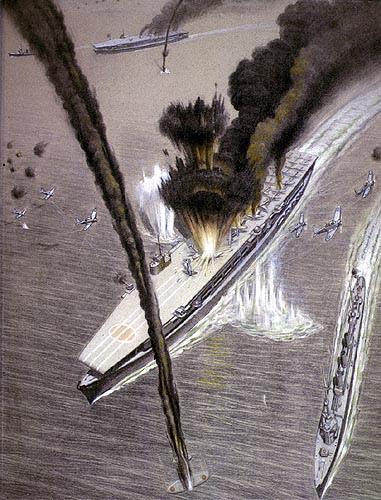
In 1999, the Nauticos company discovered wreckage that has been identified as coming from Kaga.
Nauticos Corporation and CombinedFleet.com announced that they have positively identified an important artifact belonging to the Japanese aircraft carrier Kaga, which was sunk at the Battle of Midway on June 4, 1942. In September 1999, a combined team from the Naval Oceanographic Office and Nauticos found wreckage from the carriers off the island of Midway. Working together under a Cooperative Research and Development Agreement (CRADA) signed last year, the discovery was made while at sea on the Navy oceanographic ship USNS SUMNER (T-AGS-61). The expedition collected sonar imagery and videotape of the debris.
Subsequently, this information was used by a historical team to positively identify the wreckage as coming from the Kaga. Kaga had been stuck by an American air attack at 1020 hours on the morning of 4 June. Three other Japanese aircraft carriers, Akagi, Soryu, and Hiryu, were also lost during the epic battle.
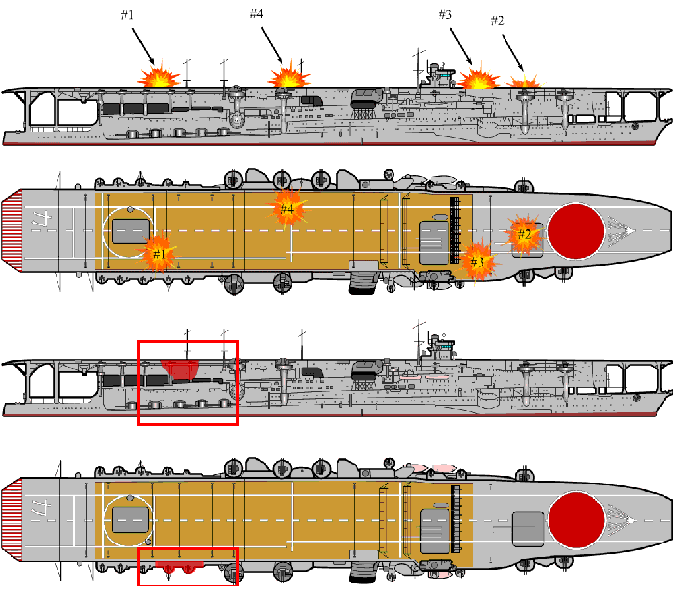
The wreckage discovered consists of two gun tubs and a section of the upper hanger deck, located on the starboard aft machine-gun gallery of Kaga.. The artifact is resting upside down in 17,000 feet of water. Also visible on the wreckage are the walkways connecting the gun tubs, an observation platform, and a landing light array (used to help guide pilots to a safe landing aboard the carrier). Follow-up analysis to determine the timing and cause of the artifact's origin is underway. It is hoped that the main hull of Kaga can be located at some time in the future.
This is an important find for the naval historic record. The Battle of Midway was one of the most crucial naval battles in history. The wreckage discovery will aid in the discovery of the main wreck of Kaga, and may ultimately lead to the other ships as well.
=================================================================================
NB: The above text has been collected / excerpted / edited / mangled / tangled / re-compiled / etc ... from the following online sources :
Kaga Aircraft Carrier - www.globalsecurity.org
Battleship Kaga
- www.globalsecurity.org
Kaga class Carrier - wikipedia article
Aircraft Carrier Kaga - www.combinedfleet.com article
Kaga Wreckage Found - www.combinedfleet.com article
IJN Kaga - ww2db.com



